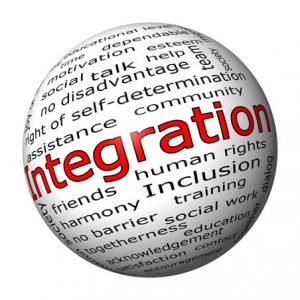AAIT™ Use In The Field
I’ve helped my clients experience results with AAIT™ for years and it’s always a great sense of fulfillment when they are happy to be released from the emotional charge associated with different life experiences. When I began teaching this model of therapy to other therapists, counselors, and spiritual guides, I did so with the intention of helping even more people indirectly. So it is an honor when I hear of the results my students are able to achieve. In fact, a well known and respected treatment center here in Tennessee wrote a piece on their website celebrating THEIR use of this “cutting edge” work. I am beyond pleased!! Check it out below.
Throughout its nearly 30 year history, Cornerstone of Recovery has provided a place where members of the therapeutic staff can introduce cutting-edge treatment techniques into an ever-evolving process designed to deliver patients from the bondage of addiction.
The 12 Step model that is our foundation continues to be a crucial part of the treatment process, but we didn’t become the largest residential treatment provider in the state of Tennessee at the expense of other clinical modalities. One of those, in fact, was developed right here in East Tennessee by Melanie McGhee, a Licensed Clinical Social Worker who has trained a handful of staff members in the utilization of Acceptance And Integration Training ™, or AAIT.
AAIT, according to McGhee’s website – listed below – is an approach to alleviating psychological pain while contributing to spiritual wellbeing. It is a non-narrative, a-historic model designed to efficiently resolve clients’ presenting problems while supporting them in the cultivation of inner steadiness.” According to Bobby McNamara, a LCSW and one of the pioneers of AAIT at Cornerstone, “it helps relieve emotional suffering without having to go into the narrative of the problem.”
Like many clinical tools used in the treatment process at Cornerstone, AAIT engages binary thinking. In order words, according to Cornerstone therapist and LCSW Sara Ridner, “suffering is a duality of avoiding pain and grasping for pleasure, and the conflict of those two things is at the crux of addiction.” Through AAIT, patients are able to process the conflicting emotions without suppressing them or denying them and find acceptance through simple tools that help them manage those emotions. As a result, they’re able to “be present” – to untangle the confliction between the emotions and alleviate the push-pull internal conflict that arises from their opposition.

“Many treatment processes involves looking at the story and analyzing the past, and we still use those processes, but this is a targeted way for us to help patients find relief outside of that,” says, who uses AAIT to treat trauma in Cornerstone’s residential treatment population.
“It’s specifically appreciated by people who have shared their stories and still can’t find relief,” McNamara adds.
“We use multiple processes that can alleviate these opposing states from creating internal conflict,” Ridner says. “AAIT helps patients recognize these dual states, these polarities, that help them break through this ‘stuck’ emotional pain.”
In other words, according to therapist Logan Mahan – who uses AAIT in Cornerstone’s Intensive Outpatient Program – patients feel torn between two conflicts: wanting to stay sober, but dealing with an overwhelming craving to drink or use. When such internal conflict arises, patients are often trapped between the urge to use and the anxiety over desperately wanting to stay sober; such a charged emotional state becomes a miasma of internal turmoil that can leave the patient feeling paralyzed between action and indecision. AAIT allows them to process the conflict, and in doing so, the suffering created by the crash of two extremes is alleviated, sometimes almost immediately.
It’s a holistic process that can also work in tandem with other Cornerstone therapeutic tools, like Schema Therapy – in any situation where patients are caught between conflicting emotional states, AAIT allows for the integration of those two opposing states, and in so doing alleviates the intense emotions surrounding both. That inner freedom opens the door to new possibilities for patients, who find that liberation from emotional reaction offers insight and clarity to a potential solution.there.
Click here for more information about Cornerstone of Recovery
A special thanks to the AAIT™ practitioners of Cornerstone of Recovery
[one_third]
[/one_third]
[one_third]
[/one_third]
[one_third_last]
LOGAN MAHAN
[/one_third_last]



Comments are closed.